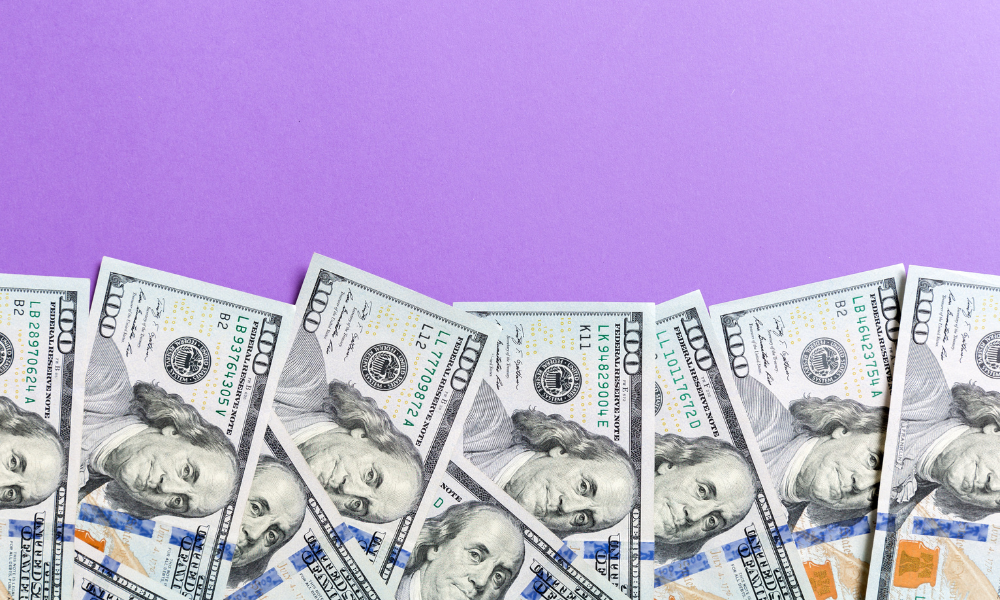
The U.S. dollar headed for its worst week since early February against major peers on Friday, weighed down by a retreat in Treasury yields and fatigue after the currency’s breathless 10%, 14-week surge.
The dollar index, which measures it against six major rivals, was down 1.5% for the week to 102.96, on track to snap a six-week winning run. A week earlier it had soared to the highest since January 2003 at 105.01.
Even with global stocks continuing to slide amid risks to growth from aggressive monetary tightening, led by the Federal Reserve, and China’s strict lockdowns to quash a Covid-19 outbreak, the dollar’s appeal as a haven was eclipsed by a decline in U.S. yields as investors rushed for the safety of Treasury bonds.
The benchmark 10-year Treasury yield sank overnight to a more than three-week low of 2.772%, from a 3 1/2-year high of over 3.2% earlier this month.
“The dollar was ripe for a pullback,” Edward Moya, senior analyst with OANDA, wrote in a note to clients. “Across the board weakness might continue a while longer.”
Other safe-haven currencies continued to rally overnight, as a key index of global equities headed for a seventh weekly decline, its longest ever.
The yen headed for a second-straight weekly advance, with the dollar dropping 1.16% to 127.785 yen since last Friday.
The Swiss franc headed for its best week since March 2020, with the dollar falling 2.9% over the period to last trade at 0.97265 francs.
| Revealed In 2022 Best Day Trading Strategies for Beginners |
Concerns grew that the Fed and other central banks have fallen behind the curve in combatting super-hot inflation, and will need to be ever more aggressive in tightening policy, inflicting pain on the economy as a consequence.
The war in Ukraine shows no sign of abating either, darkening the outlook for commodity price-driven inflation.
China’s path out of coronavirus lockdowns also remains unclear, threatening more global price pressures, even as Shanghai prepares to allow more businesses in zero-Covid areas to resume normal operations from the beginning of June.
The Australian and New Zealand dollars have drawn some support from signs of a reopening in their major trading partner, despite the risk-off tone in equity markets.
The Aussie has rallied 1.4% this week and the kiwi has added 1.49%.
Australia’s currency slipped on Friday though, down 0.23% to $0.7031, as the U.S. dollar bounced a bit after the Aussie’s 1.33% surge on Thursday.
“China’s strict lockdowns are the main reason why AUD has diverged so much from the level implied by its fundamentals,” Carol Kong, an analyst at Commonwealth Bank of Australia, wrote in a note.
“We remain confident AUD can rebound strongly once lockdowns are eased because of China’s commitment to ramp up infrastructure spending.”
New Zealand’s kiwi though held all of the previous day’s 1.41% jump, ticking up a bit more to $0.63845. The Reserve Bank of New Zealand sets policy next Wednesday, with expectations for another half-point increase to the key rate.
The euro edged 0.07% lower on Friday to $1.05735, but was still on course for a 1.55% weekly gain. Sterling slipped 0.07% to $1.24615, but was up 1.66% for the week, its best showing since late 2020.
Westpac analysts warned not to count the dollar out, even if its rally was “losing some of its vitality.”
Hot Topics
US Companies Boost Capital Spending To Tackle Supply Bottlenecks
Asian Stocks Wobble As Growth Doubts Loom
New Zealand Banks Predict 20% Drop In House Prices Over Next Year
“It’s still far too early to call a long-term peak, amid unsettled global market conditions and a resolute Fed,” the Australian bank’s analysts wrote in a research note, recommending buying on dips in the 102s and targeting 105 multi-week. Source: CNBC